The F-16, the most advanced 4th-generation fighter ever built, brings a new level of capability to air forces around the world. So, Let’s Delve into the Best of the Lockheed F-16 in Detail. A highly agile and versatile multirole fighter aircraft with a sleek and streamlined design, it was built by General Dynamics. The F-16 Fighting Falcon was made for the USAF in 1974 and remains an enduring symbol of aerial prowess and combat effectiveness, with a legacy that spans decades of service in air forces around the world.
Its combination of agility, versatility, and continuous improvement has solidified its place as one of the most successful and respected fighter aircraft in aviation history as of 2023. With its continuous improvements and modernization efforts, the F-16 continues to maintain its reputation as a cutting-edge platform that serves multiple nations’ air forces globally.
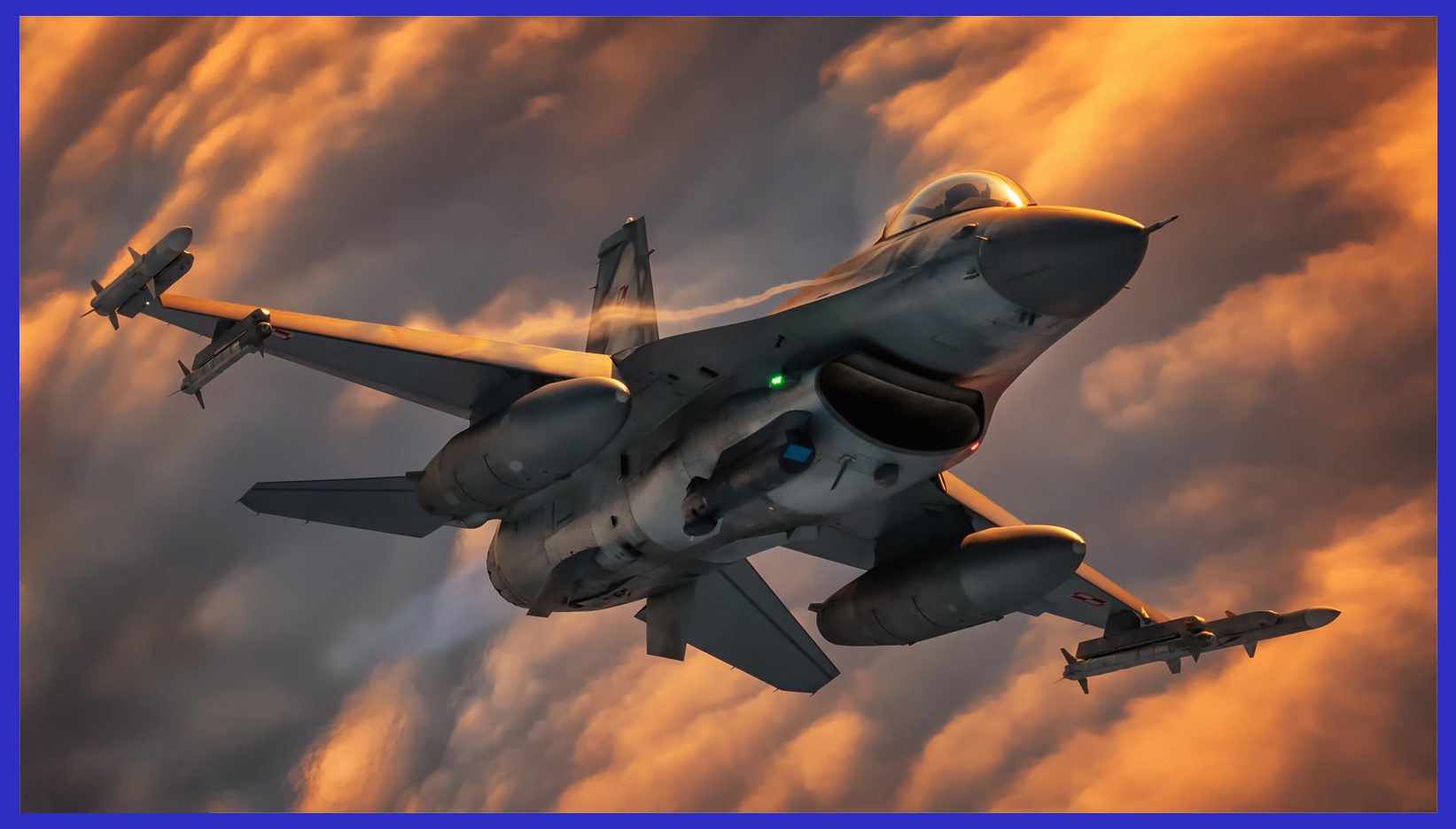
Since its production approval in 1976, more than 4,600 aircraft have been manufactured. Recently, in 2022, the USAF announced plans to continue operating the F-16 for an additional two decades. Interestingly, there are ongoing efforts to develop improved versions tailored for export customers. Notably, back in 1993, General Dynamics made a significant move by selling its aircraft manufacturing business to the Lockheed Corporation, and subsequently, the latter merged with Martin Marietta in 1995, forming the renowned Lockheed Martin.
The manoeuvrability and fighting radius of the F-16 are superior to those of all possible threat fighter aircraft in the air combat role. It has the ability to find targets in any weather and detect low-flying aircraft amid radar ground clutter. In an air-to-surface role, the F-16 can fly more than 860 km (500 mi), deliver its missile with exceptional accuracy while defending itself from opposing aircraft, and then return to base.
The aircraft can deliver munitions properly when bombing without visibility, thanks to its all-weather capability. Apart from its primary role in the U.S. Air Force, the F-16 finds utility in the Air Force Reserve Command and Air National Guard units. Furthermore, this versatile aircraft has been sought after by 25 other nations’ air forces, making it an internationally adopted platform.

Development story of the General Dynamics F-16 Fighting Falcon
The General Dynamics F-16 Fighting Falcon’s development, presently manufactured by Lockheed Martin, unfolds as a captivating narrative of innovation and steadfast determination. Its inception dates back to the early 1970s, a direct outcome of the United States Air Force’s (USAF) Lightweight Fighter (LWF) program. The primary objective of this program was to conceive a budget-friendly and exceptionally agile air-to-air combat aircraft. The realization of such a need became evident after the Vietnam War experience, prompting the quest for advanced air superiority fighters, culminating in the remarkable F-16 Fighting Falcon.
Origins and Prototype (YF-16): In 1972, the USAF selected two prototypes for the LWF program, one of which was the YF-16, designed by General Dynamics (now part of Lockheed Martin). The YF-16 was a radical departure from traditional fighter designs, featuring a highly unstable blended-wing body balanced by advanced fly-by-wire controls, with a single-engine configuration. This innovative approach aimed to reduce weight, increase agility, and enhance performance.

First Flight and Competition: On January 20, 1974, the YF-16 embarked on its inaugural flight with General Dynamics test pilot Phil Oestricher at the controls. Subsequently, the YF-16 achieved its first supersonic flight on 5 February 1974, followed by the first flight of the second YF-16 prototype on 9 May 1974. Throughout the fly-off competition, the YF-16 completed an impressive 330 sorties, accumulating a total of 417 flight hours.
During the Lightweight Fighter (LWF) fly-off contest against the Northrop YF-17, the YF-16 showcased remarkable agility and outstanding performance, leading to its selection as the winner in April 1975, designated solely for the USAF. Although the F-15 was concurrently undergoing continuous development during that era, the USAF acknowledged that fulfilling the requirement for an air superiority fighter with a twin-engine large-sized aircraft would incur significantly higher costs than anticipated. Consequently, they also opted for the single-engine fighter.
The aircraft was officially designated as the F-16 and full-scale development (FSD) F-16s were manufactured by General Dynamics in Fort Worth, Texas, at the United States Air Force Plant 4, commencing in late 1975.

Early Production and Variants: The first production F-16A took to the skies in October 1976. The early F-16A models were primarily air-to-air fighters, equipped with the Westinghouse AN/APG-66 radar. Over time, various F-16 variants were developed, incorporating improvements in avionics, engines, and weapons systems. The following year, the F-16B, a two-seat version, was also introduced to support pilot training and operational needs. The aircraft entered USAF operational service with the 34th Tactical Fighter Squadron, 388th Tactical Fighter Wing, at Hill AFB in Utah, on 1 October 1980, with its given name of “Fighting Falcon”. The F-16 “C/D” variant entered USAF service in 1984.
Export Success and Foreign Production: The F-16 gained significant international attention due to its exceptional performance and comparatively lower cost in comparison to other contemporary fighter aircraft. At the Paris Air Show in June 1975, the European Participation Group, consisting of four European partners, displayed their interest by committing to acquire a total of 348 aircraft. The allocation of these aircraft was distributed among the European Participation Air Forces (EPAF), with Belgium receiving 116, Denmark 58, the Netherlands 102, and Norway 72 aircraft.

To facilitate production, two European production lines were established for licensed manufacturing, located at Fokker’s Schiphol-Oost facility in the Netherlands and SABCA’s Gosselies plant in Belgium. Moreover, Norway’s Kongsberg Vaapenfabrikk and Denmark’s Terma A/S contributed to the production process by manufacturing parts and subassemblies for the EPAF aircraft. In the 1990s, Turkish Aerospace Industries (TAI) was actively involved in the production of 232 Block 30/40/50 F-16s for the Turkish Air Force. This manufacturing took place on a dedicated production line in Ankara, under a licensing agreement.
In addition to serving the Turkish Air Force, TAI also manufactured 46 Block 40s for Egypt during the mid-1990s and later produced 30 Block 50s from 2010 onwards. Meanwhile, in Asia, the KF-16 program, overseen by Korean Aerospace Industries, led to the production of approximately 140 Block 52 F-16s between the mid-1990s and the mid-2000s. The successful export of the F-16 to numerous allied nations further solidified its reputation as a prominent and widely utilized global fighter aircraft.

Step Into Multirole Capabilities: Recognizing the potential for the F-16 to perform ground attack missions, General Dynamics worked on transforming the F-16 into a multi-role platform. The F-16C/D models, introduced in the 1980s, featured improved radar and avionics, enabling the aircraft to effectively engage ground targets. The present F-16 Fighting Falcon (as of 2023) is a highly capable multirole fighter with agile air-to-air combat prowess and precise air-to-ground strike capabilities.
Equipped with advanced AN/APG-83 active electronically scanned array (AESA) radar systems and guided munitions, it can engage enemy aircraft with short to medium and long-range missiles while delivering precision strikes against ground targets using laser-guided bombs, JDAMs, and cluster munitions. The F-16 demonstrates exceptional capabilities in close air support and effectively suppresses enemy air defences using HARM missiles.

It is equipped with the LINK 16 Communications System, a more powerful Mission Control Computer, an additional Multi-Function Display with movable map navigation, an advanced Debriefing System, and the capacity to carry the RECCE Reconnaissance Pod for efficient intelligence, surveillance, and reconnaissance (ISR) missions. Furthermore, the F-16 benefits from buddy refuelling, which extends its operational range and supports network-centric warfare. Its modern electronic warfare systems enable it to detect and counter enemy threats, establishing the F-16 as a formidable and versatile asset in today’s battlefield.
Continued Upgrades: Over the years, the F-16 underwent numerous upgrade programs to remain relevant in modern warfare. Upgrades included improved radar systems, advanced avionics, enhanced precision-guided munitions capabilities, and structural enhancements for extended service life. In the 1980s, the Multinational Staged Improvement Program (MSIP) was implemented in three stages, swiftly introducing new capabilities at reduced costs and minimising risks compared to traditional upgrades.
In 2012, the USAF initiated a program to upgrade 350 F-16s, adding an auto-GCAS (Ground Collision Avoidance System) to reduce controlled flight into terrain instances. In 2014, the USAF issued an RFI for a service life extension program (SLEP) for 300 F-16 C/Ds, demonstrating a commitment to preserve and enhance the F-16’s operational capabilities in modern combat scenarios.
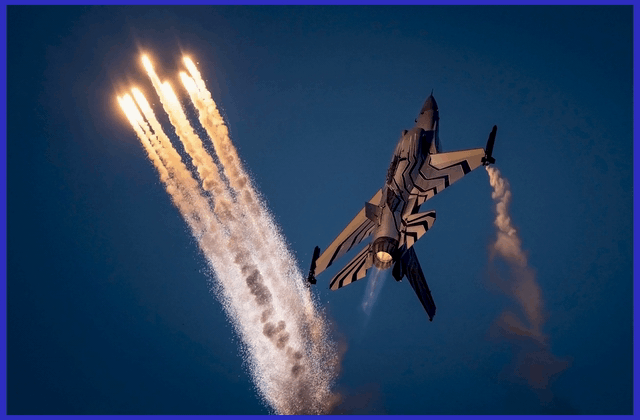
An Analysis of the Present-Day Lockheed Martin F-16 Fighting Falcon Design
An Initial Overview of the Configuration
The Lockheed Martin F-16 Fighting Falcon stands out as a highly versatile and agile multirole fighter aircraft, earning acclaim for its exceptional combat effectiveness. Notably, it holds the distinction of being the first fighter aircraft specifically constructed by General Dynamics (GD) to handle 9-g manoeuvres while achieving a maximum speed exceeding Mach 2 with its single-engine configuration. A prominent feature of the F-16 is its frameless bubble canopy, meticulously designed to enhance visibility for the pilot. Additionally, it incorporates an innovative reclined seat, strategically intended to minimize the impact of g-forces on the pilot during maneuvers.
Interestingly, the F-16 boasts a remarkable thrust-to-weight ratio greater than one, providing ample power for climbing and vertical acceleration, even under full loading conditions. The aircraft’s design revolves around cost-effectiveness and ease of maintenance compared to earlier-generation fighters. Consequently, the United States Air Force (USAF) currently leans towards exploring updated versions of the F-16 in 2023, rather than considering the F-35 due to the latter’s higher maintenance costs.

The F-16’s airframe is meticulously crafted, incorporating approximately 80% aviation-grade aluminium alloys, 8% steel, 3% composites, and 1.5% titanium, ensuring unparalleled durability and strength. Notably, cutting-edge technology is employed in the construction of leading-edge flaps, stabilators, and ventral fins, utilizing bonded aluminium honeycomb structures fortified with graphite epoxy lamination coatings.
What’s truly remarkable is that GD’s ingenious design engineers specifically engineered the F-16’s airframe life to withstand an impressive 8,000 hours of operation, while still being capable of executing exhilarating 9-g manoeuvres even with full internal fuel. This strategic foresight proved immensely advantageous when the aircraft’s mission evolved from exclusive air-to-air combat to encompass dynamic multi-role operations.

Avionics and Datalink Sensors: The F-16 features a highly precise inertial navigation system that offers the pilot accurate steering information. Additionally, the aircraft is equipped with UHF and VHF radios, an automatic instrument landing system, and a warning system, along with electronic countermeasure pods designed to counter airborne and surface electronic threats effectively. The F-16’s cutting-edge avionics include advanced radar systems such as the AN/APG-83 SABR (Scalable Agile Beam Radar), enabling extended detection ranges and superior target tracking in both air-to-air and air-to-ground missions.
Northrop Grumman took the lead in developing the latest AESA radar upgrade for the F-16. In a significant development, on 28 February 2020, the USAF commissioned Northrop Grumman to extend the service lives of their F-16s, utilizing the APG-83 SABR, as part of the comprehensive service-life extension program (SLEP).
Having the right information at the right time is critical to a combat pilot. Moreover, the F-16 offers a choice of secure Link 16 datalink systems, allowing it to be tailored with information technologies that connect the pilot with other flight members, as well as external information sources.

Fly-by-Wire Technology: The F-16 was among the pioneering production aircraft to introduce a fly-by-wire (FBW) control system. Departing from conventional mechanical linkages, this system allows the pilot’s commands to be transmitted electronically to the control surfaces, thereby significantly enhancing the aircraft’s responsiveness and control precision. Furthermore, the FBW system incorporates stability augmentation, facilitating the pilot’s handling of the aircraft across various flight conditions.
To effectively counter the tendency to deviate from controlled flight and eliminate the need for constant trim inputs by the pilot, the F-16 is equipped with a quadruplex (four-channel) fly-by-wire (FBW) flight control system (FLCS). The flight control computer (FLCC) processes the pilot’s input from the stick and rudder controls, skillfully manipulating the control surfaces to achieve the desired outcome without inducing control loss. The FLCC continuously performs thousands of measurements per second, monitoring the aircraft’s flight attitude to automatically correct any deviations from the pilot’s intended flight path.
Furthermore, the FLCC incorporates limiters that govern movement in the three primary axes based on attitude, airspeed, and angle of attack (AOA)/g-force. These limiters prevent control surface-induced instability, such as slips or skids, and mitigate the risk of a high AOA leading to a stall. They also act as safeguards, preventing manoeuvres that could exert more than a 9-g load on the aircraft, ensuring safe and controlled flight operations.
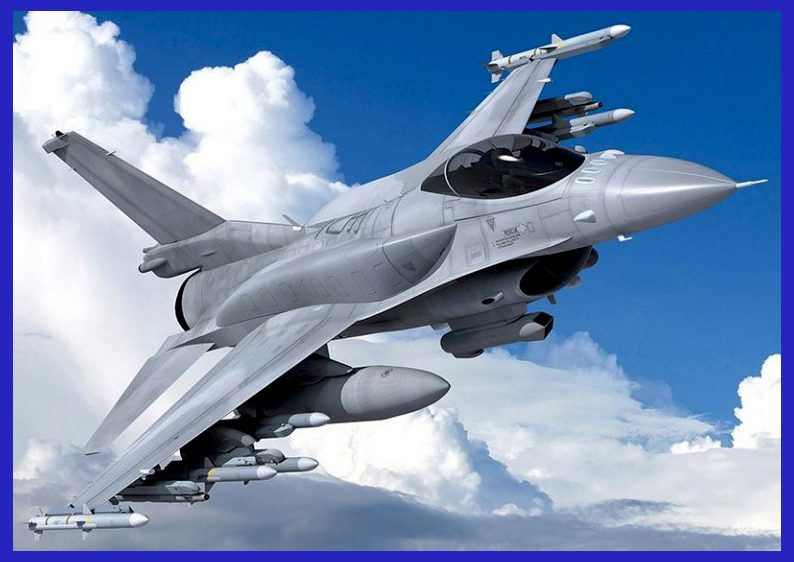
Weapon Systems: With a combined loadout of air-to-air and air-to-ground weapons, the F-16 has demonstrated its ability to provide self-fighter escort and destroy attacking enemy fighters. In the air combat arena, F-16s have accumulated more than 50 victories with no losses. The F-16’s design allows it to carry a wide array of weapons, including air-to-air missiles like the AIM-9 Sidewinder and AIM-120 AMRAAM, air-to-ground munitions like laser-guided bombs and JDAMs, as well as rockets and other unguided weapons.
The aircraft can carry various other European AAMs, a variety of air-to-ground missiles, rockets, or bombs, electronic countermeasures (ECM), navigation, targeting, or weaponry pods, as well as fuel tanks. There are nine hardpoints on the aircraft: six are located under the wings, two are located under the wingtips, and one is located under the fuselage. Sensor or radar pods can be installed in two more locations underneath the fuselage. The F-16 is equipped with a 20 mm M61A1 Vulcan gun, which is located inside the fuselage on the port side of the cockpit.
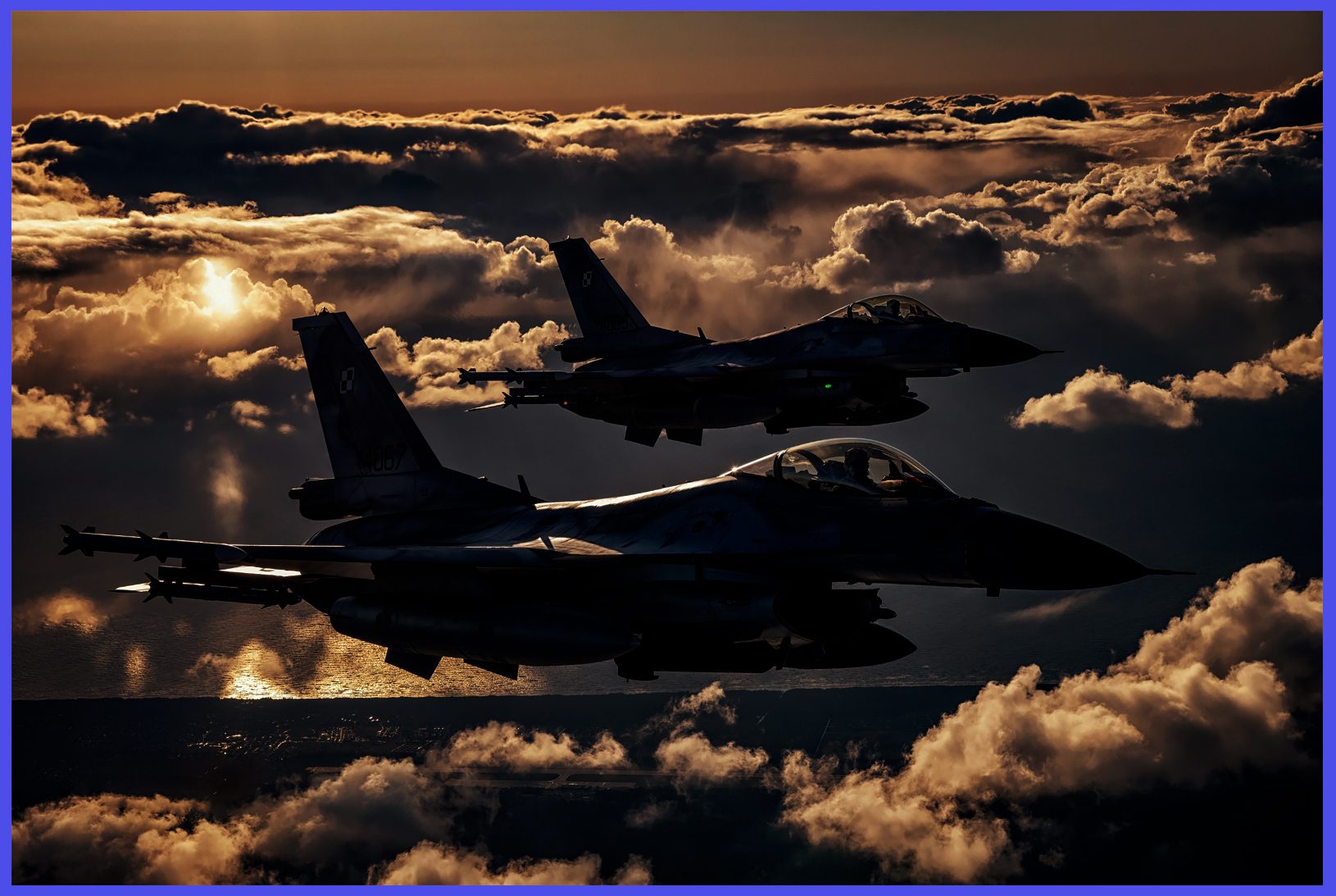
Cockpit and Human-Machine Interface: The cockpit of the F-16 is meticulously designed to prioritise pilot comfort and efficiency, incorporating advanced mechanisation with multifunctional displays, user-friendly controls, and ergonomically designed seating. These carefully crafted features collectively contribute to a significant reduction in pilot workload while enhancing overall effectiveness in flight operations. A notable element is the single-piece polycarbonate bubble canopy, engineered to be bird-proof, which ensures an exceptional field of view, providing pilots with 360° all-round visibility.
Moreover, the canopy allows for a 40° look-down angle, enabling the pilot to have a clear view over the side of the aircraft and a 15° downward view over the nose. To further optimise visibility and operational capability, the pilot’s seat is elevated accordingly. Additionally, the F-16 is equipped with the ACES II zero/zero ejection seat, positioned at a reclined tilt-back angle of 30°, which is unique and specially tailored to the aircraft’s design.

As a result of this unique reclined angle, the ejection seat of the F-16 does not necessitate canopy-breakers for emergency egress. Instead, in the event of an ejection, the entire canopy is jettisoned before the ejection seat’s rocket firing mechanism is activated. This streamlined process ensures a swift and safe ejection for the pilot.
Moreover, to augment the pilot’s control capabilities, especially during high-G combat manoeuvres, the aircraft’s design incorporates centralised hands-on throttle-and-stick (HOTAS) controls. These controls are strategically placed on both the controllers and the throttle, providing the pilot with intuitive access to various switches and function controls. The success of this innovative design has led to HOTAS controls becoming a standard feature on modern fighter aircraft, further enhancing their manoeuvrability and overall performance in contemporary aerial combat scenarios.

In addition, the F-16 Fighting Falcon is equipped with a wide array of instruments and displays to provide the pilot with essential flight and mission information. These include the Head-Up Display (HUD), Boeing Joint Helmet Mounted Cueing System (JHMCS), Colour Multi-Function Display (MFD), Electronic Flight Instruments System (EFIS), Radar Warning Receiver (RWR), Instrument Landing System (ILS) Indicator, Altitude and Vertical Speed Indicator, Horizontal Situation Indicator (HSI), Tactical Air Navigation (TACAN) System, Engine Instruments, Communication and Navigation Radios, and the Weapon Control Panel.

Structural Enhancements and Durability: The F-16’s airframe has undergone continuous improvements, ensuring its structural integrity and extending its service life. Additionally, starting from Block 50/52 onwards, the introduction of Conformal Fuel Tanks (CFTs) has significantly enhanced the aircraft’s range, persistence, and payload capability. These CFTs are designed with ease of installation and removal in mind, and their aerodynamic shape optimizes fuel efficiency without compromising the F-16’s renowned handling characteristics.
Over time, the F-16 has demonstrated its ruggedness and dependability through numerous deployments to distant and austere air bases, where it has successfully sustained high-tempo operations in challenging environments with minimal logistical support. Furthermore, these advancements have facilitated the seamless integration of new technologies and weapon systems onto aircraft.
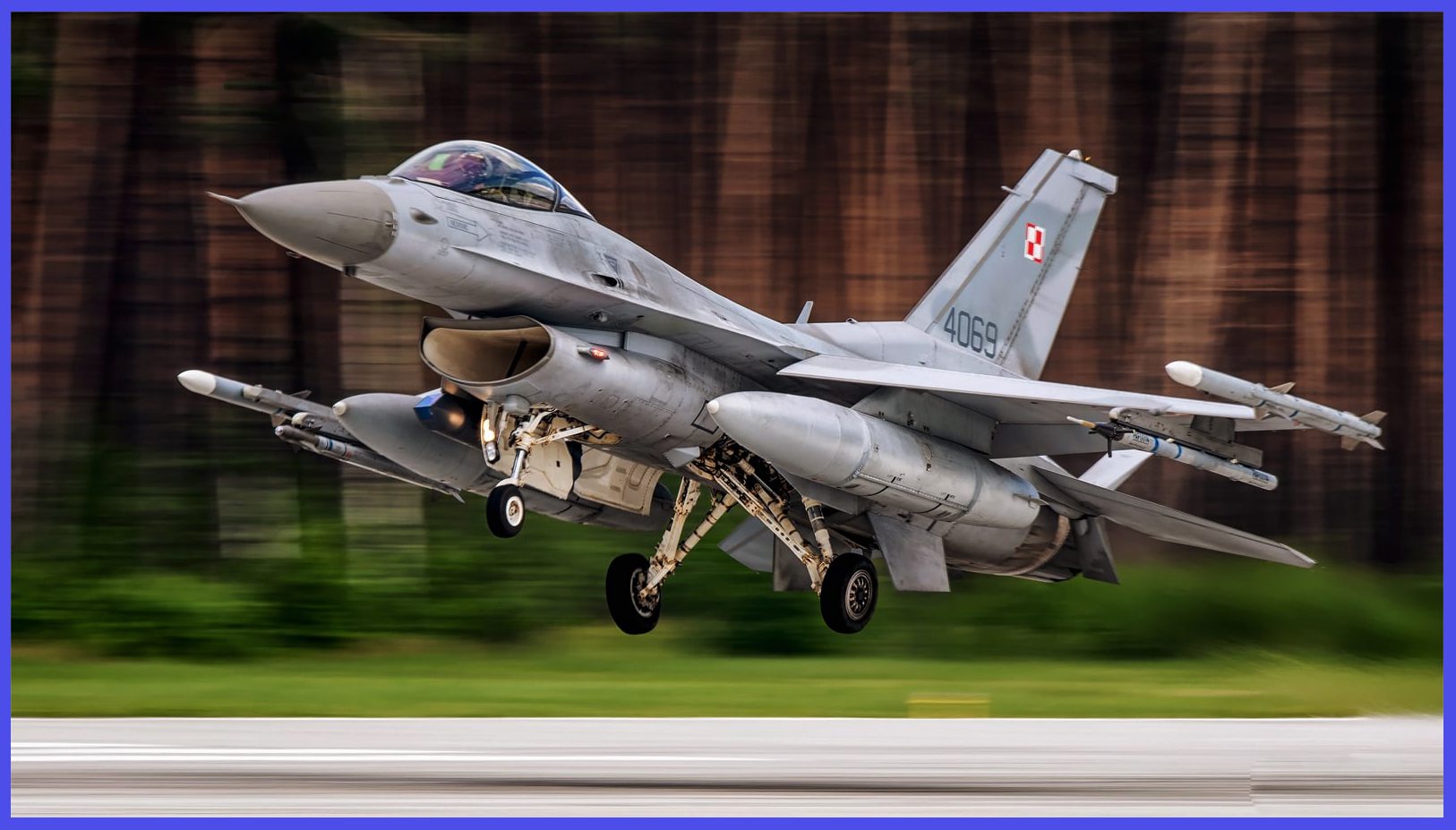
Engine Performance: The F-16’s engine, typically the Pratt & Whitney F100 or General Electric F110, provides an exceptional thrust-to-weight ratio and overall performance. This capability allows the aircraft to achieve high speeds and climb rates, which are crucial for air superiority and intercepting adversaries. Initially, the single-engined F-16 was equipped with the Pratt & Whitney F100-PW-200 after burning turbofan. During testing, this engine was found to be prone to compressor stalls and “rollbacks,” where the thrust would spontaneously reduce to idle.
In response to this issue, General Electric was also part of the competition to become an additional engine provider for the F-16. Starting from 1997, the General Electric F110-GE-100 turbofan was chosen. However, due to the limitations of the original inlet, the F110’s thrust was initially capped at 25,735 lbf (114.47 kN). Nonetheless, with the introduction of the Modular Common Inlet Duct, the F110 was able to achieve its maximum thrust of 28,984 lbf (128.93 kN). This sparked a highly competitive and contentious contest between two major aerospace companies, General Electric (GE), and Pratt & Whitney (PW), as they vied for the engine contract, famously known as the never-ending, Great Engine War.

To distinguish between aircraft equipped with their engines and inlets, starting from the Block 30 series onwards, blocks ending in “0” (e.g., Block 30) are powered by GE, while blocks ending in “2” (e.g., Block 32) are fitted with Pratt & Whitney engines. Overall, out of the approximately 1,446 F-16C/Ds ordered by the USAF, 556 were fitted with PW F100-series engines, and 890 were equipped with GE F110s.
In an additional engine update, the Block 60 variant of the F-16 used by the United Arab Emirates is equipped with the General Electric F110-GE-132 turbofan. This powerful engine delivers a maximum thrust of 32,500 lbf (145 kN), setting a new record as the highest-thrust engine ever developed for the F-16.
Overall, the F-16’s design brilliance, coupled with its adaptability and operational success, has made it one of the most celebrated and enduring fighter aircraft in the history of aviation. Its legacy continues to shape the modern era of military aviation.
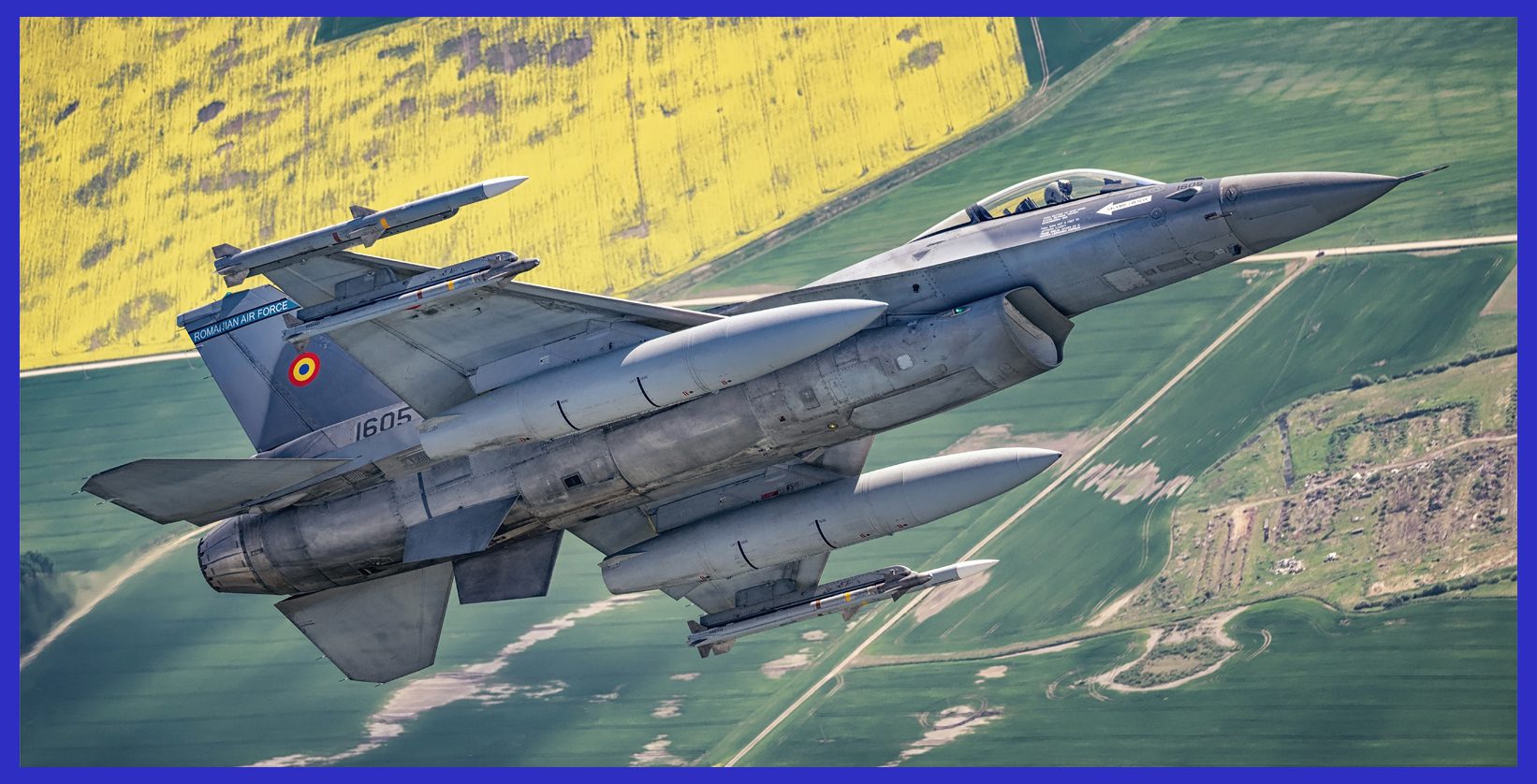
Tactical Advancements in F-16 Variants: Since Its Inception
Over the years, the F-16 Fighting Falcon has undergone an impressive evolution, giving rise to numerous variants uniquely designed to cater to specific requirements and roles for diverse operators. However, the F-16 models are denoted by increasing block numbers to signify upgrades, covering both single- and two-seat versions. A wide array of software, hardware, systems, weapons compatibility, and structural enhancements have been implemented over the years to gradually upgrade production models and retrofit delivered aircraft.
F-16A/B: The F-16, initially known as the F-16A, served as a single-seat fighter aircraft, while the F-16B functioned as a two-seat trainer version. Its primary role focused on being an air superiority fighter, boasting a solitary Pratt & Whitney F100-PW-200 afterburning turbofan engine. Equipped with a single M61 Vulcan 20mm cannon, the F-16A/B possessed the capability to carry an assortment of air-to-air missiles and bombs. It was produced until 1985 and came in a range of variants such as the Block 1, 5, 10, 15, and 20 versions.
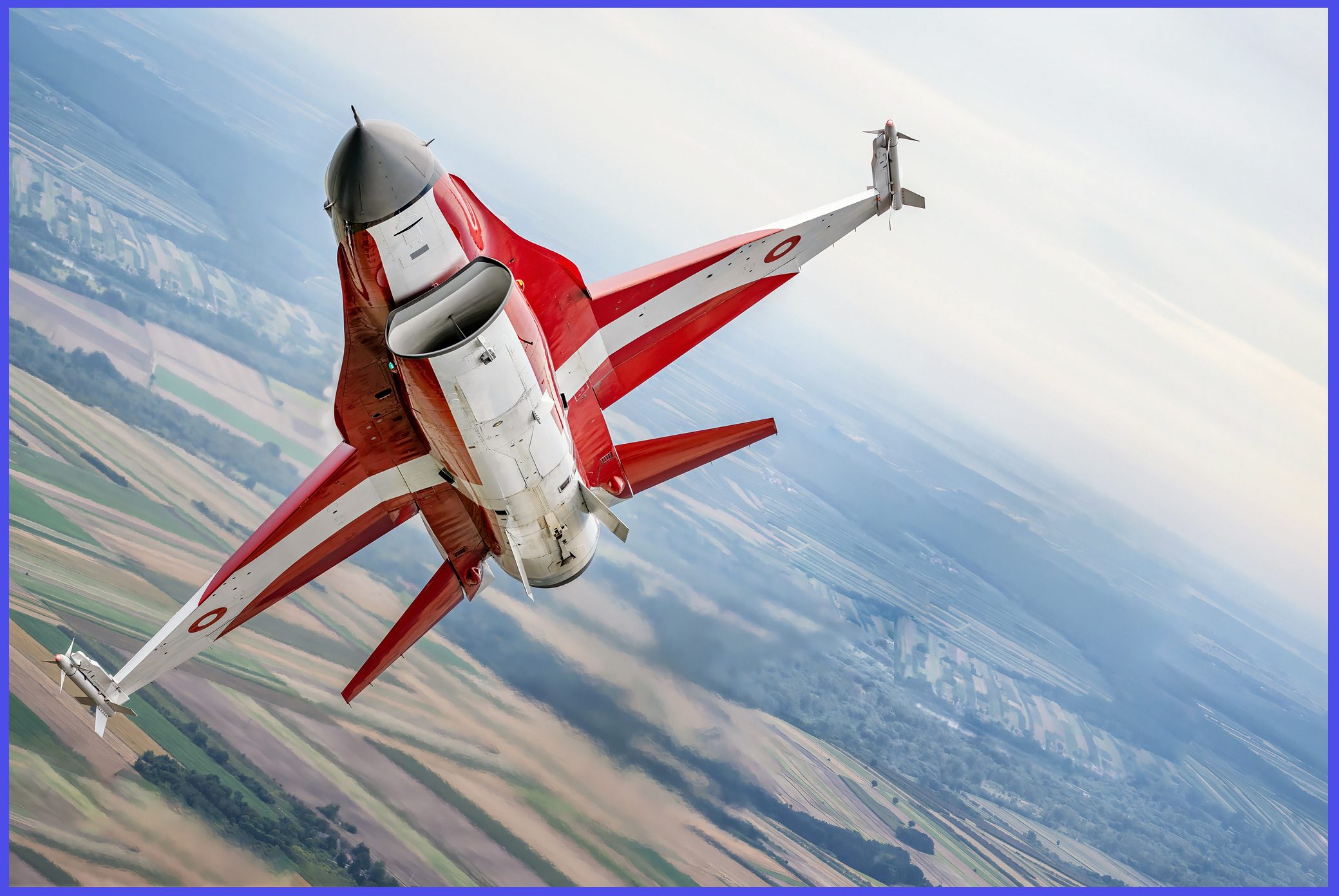
F-16C/D Block 25/30/32: Introduced in the early 1980s and entered production in 1984, the F-16C was an upgraded version of the F-16A, with improved avionics and the ability to carry more advanced weapons. The first C/D version was initiated with Block 25, which featured improved cockpit avionics and radar, adding all-weather capability with beyond-visual-range (BVR) AIM-7 and AIM-120 AAMs, as well as AGM-45 Shrike and AGM-88 HARM ASM, deploying capacity.
The F-16D was the two-seat version of the F-16C, used for training and operational roles. This was the first block of F-16s, from block 30 onwards, affected by the Alternative Fighter Engine project, under which aircraft were fitted with either the traditional Pratt & Whitney engines or, for the first time, the General Electric F110-GE-100. From this point on, blocks ending in “0” (e.g., Block 30) are powered by GE, and blocks ending in “2” (e.g., Block 32) are fitted with Pratt & Whitney engines. Approximately 733 aircraft were produced and delivered to six countries. In fact, Block 32 aircraft were also assigned to the USAF Thunderbird flight demonstration squadron, which was built from 1986 to 1987.
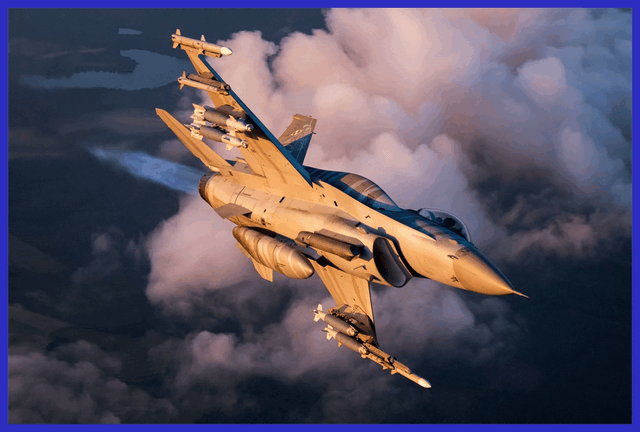
F-16C/D Block 40/42: These variants featured significantly improved radar capabilities, with the AN/APG-68(V)5 radar and substantially increased internal fuel capacity. The Block 40/42 F-16s were meticulously optimized for highly effective ground attack missions and boasted additional air-to-ground weapon options, along with the advanced all-day/all-weather strike variant equipped with the LANTIRN pod. Commencing from 2002, the Block 40/42 further expanded the weapon range available to the aircraft, incorporating JDAM, AGM-154 Joint Standoff Weapon (JSOW), Wind-Corrected Munitions Dispenser (WCMD), and the (Enhanced) EGBU-27 Paveway “bunker-buster.” A commendable total of 615 Block 40/42 aircraft were proficiently delivered to five countries.
F-16C/D Block 50/52: Introduced in the 1990s, these variants included further avionics enhancements, such as the AN/APG-68(V)7 radar, and were equipped with more powerful engines powered by the F110-GE-129, while the Block 52 jets utilized the F100-PW-229. They were highly capable of carrying a broader range of precision-guided munitions, such as the AGM-88 HARM missile, JDAM, JSOW, and WCMD, and also featured improved electronic warfare suites.

F-16E/F (Block 60): These variants were specifically developed for the United Arab Emirates (UAE) and were occasionally referred to as the “Desert Falcon.” They are based on the F-16C/D Block 50/52 and come with notable enhancements in radar, avionics, and conformal fuel tank design. The Block 60 configuration allows for the carrying of all Block 50/52-compatible weaponry, in addition to the AIM-132 Advanced Short Range Air-to-Air Missile (ASRAAM) and the AGM-84H/K SLAM-ER Cruise Missile. According to reports cited by Flight International, this marks “the first time the US has sold a better aircraft (F-16) overseas than its forces fly.”
The F-16E was a single-seat version, while the F-16F was a two-seat version. The F-16E/F Block 60 was equipped with an advanced AESA radar, specifically designed by Northrop Grumman as the AN/APG-80 AESA, which grants the aircraft the capability to simultaneously track and neutralize ground and air threats. To meet the power demands of the AESA radar, an improved engine from General Electric, the F110-GE-132, with a thrust rating of 32,500 lbf (144 kN), was developed and incorporated into this version.
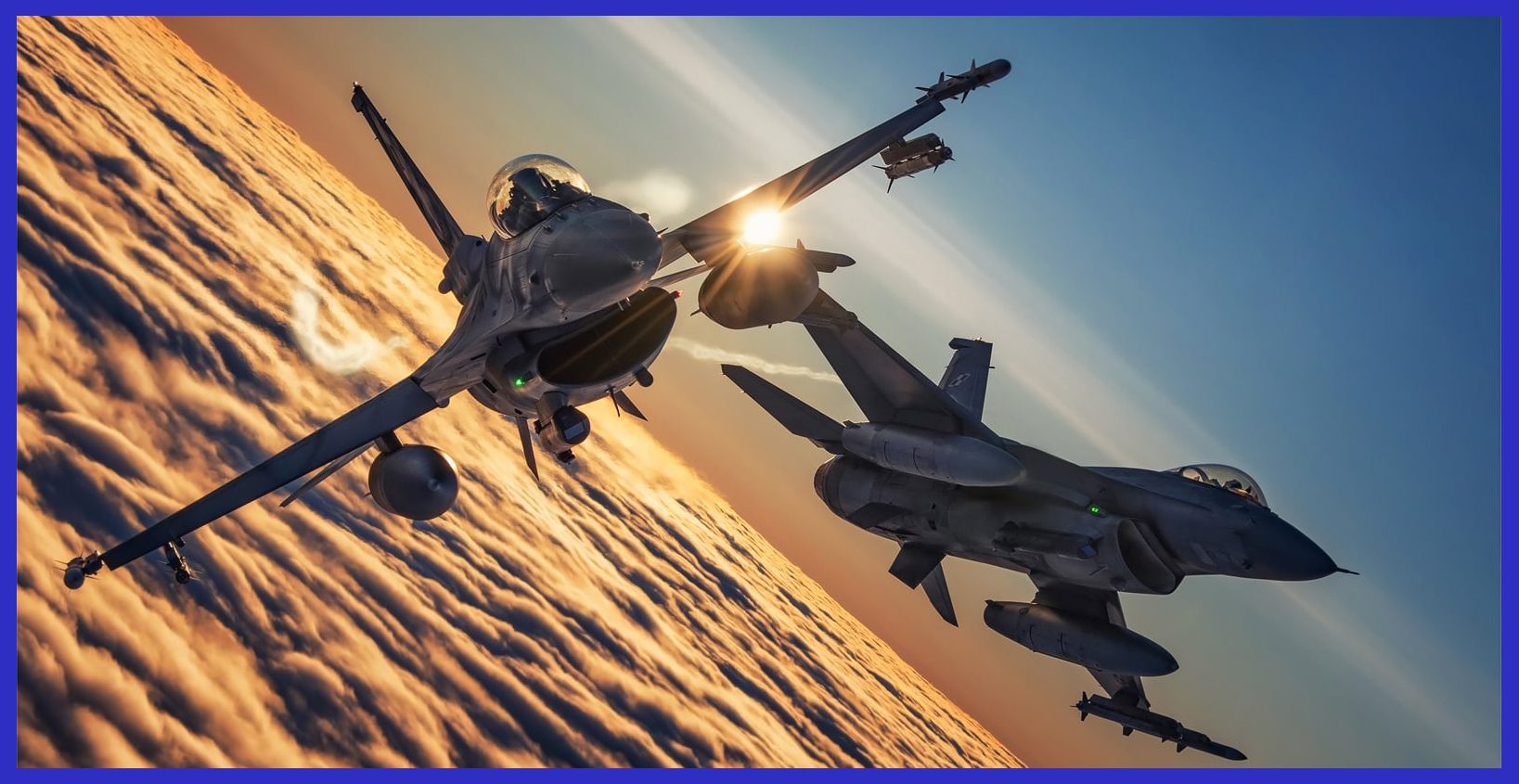
The F-16V ( Block 70/72 ): On 15 February 2012, Lockheed Martin unveiled the new version of the F-16. In October 2015, the F-16V featured an AN/APG-83 active electronically scanned array (AESA) radar, equipped with a Scalable Agile Beam Radar (SABR) operating system, resulting in a significantly upgraded mission computer and architecture, along with cockpit improvements. These enhancements were specifically identified by the U.S. Air Force and several international customers for future improvements.
The new variant earned the name “Viper,” as it was intended to be better optimized for operating alongside fifth-generation fighters, particularly in foreign countries with F-35s. In 2019, Taiwan and the United States entered into an $8 billion deal to procure 66 new-build Block 70 aircraft. However, it is important not to confuse this version with Lockheed’s F-16IN Block 70/72 “Super Viper,” which was offered to India for the Medium Multi-Role Combat Aircraft competition and was showcased at the 2009 Aero India Air Show.
It’s important to highlight that the F-16, being a versatile aircraft, has been adapted and customized by many countries to suit their specific operational needs. This has led to the creation of numerous sub-variants and unique configurations of the F-16 in service all around the world. Different nations have implemented specific avionics, weaponry, and other modifications to optimize the aircraft’s capabilities for their missions. As a result, you can find a diverse range of F-16 versions, each tailored to the requirements and preferences of the countries operating them.
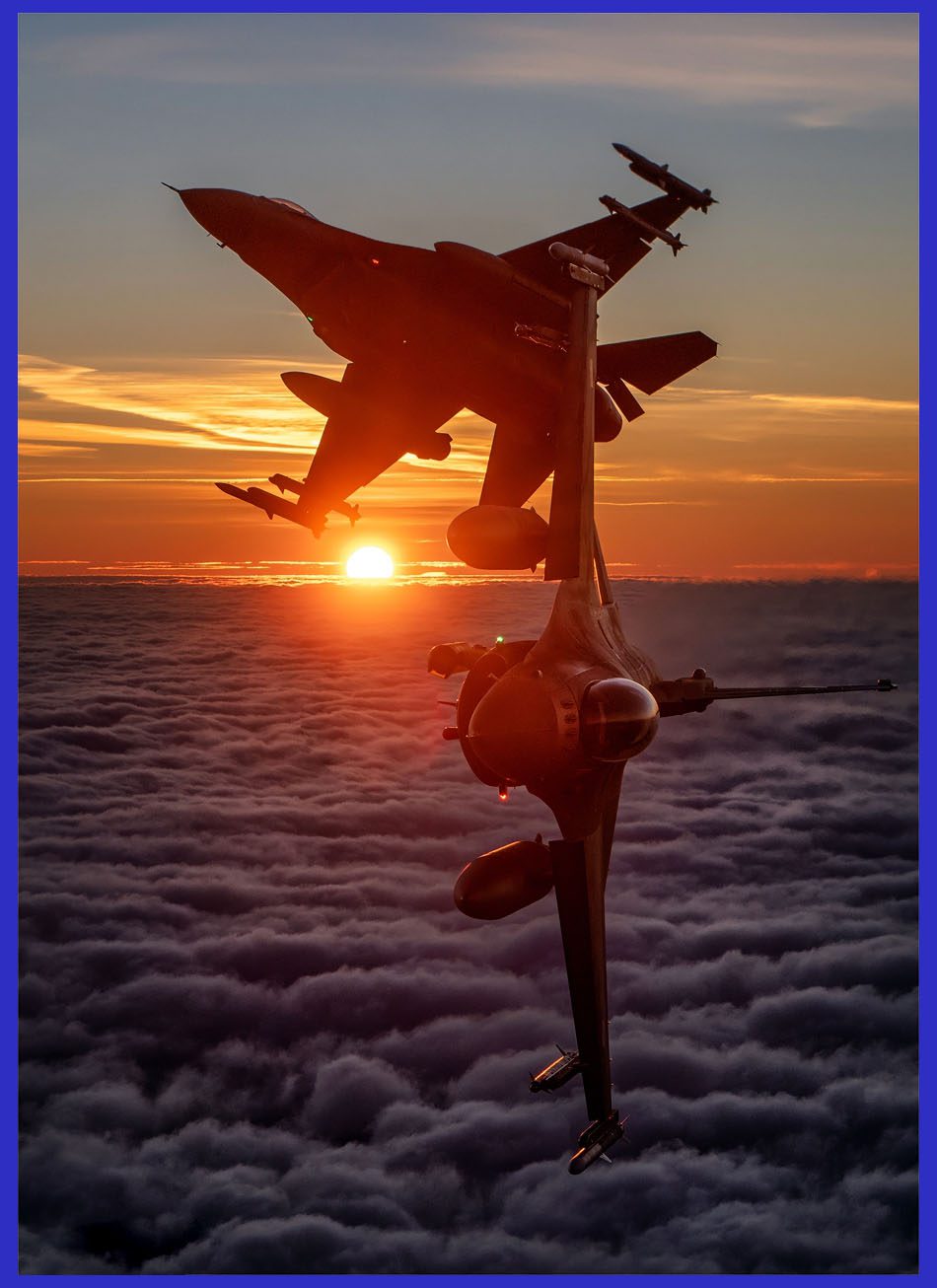
Expanding Global Reach: International Operators of the F-16 Fighting Falcon
Apart from the United States, an increasing number of countries have significantly acquired and effectively deployed the highly advanced F-16 aircraft variants. Some notable examples include Bahrain, Belgium, Chile, Denmark, Egypt, Greece, Indonesia, Iraq, Israel, South Korea, Singapore, Jordan, Morocco, Netherlands, Oman, Pakistan, Poland, Portugal, Romania, Taiwan, Thailand, Turkey, UAE, and Venezuela, among others.
Notably, Italy had previously leased F-16s from the US, while Norway has already phased them out in favour of the F-35s, further reinforcing the worldwide presence and profound impact of the F-16 program. As of July 2010, the production of F-16s had reached an impressive count of 4,500, underscoring the immense scale and global significance of this exceptional aircraft.
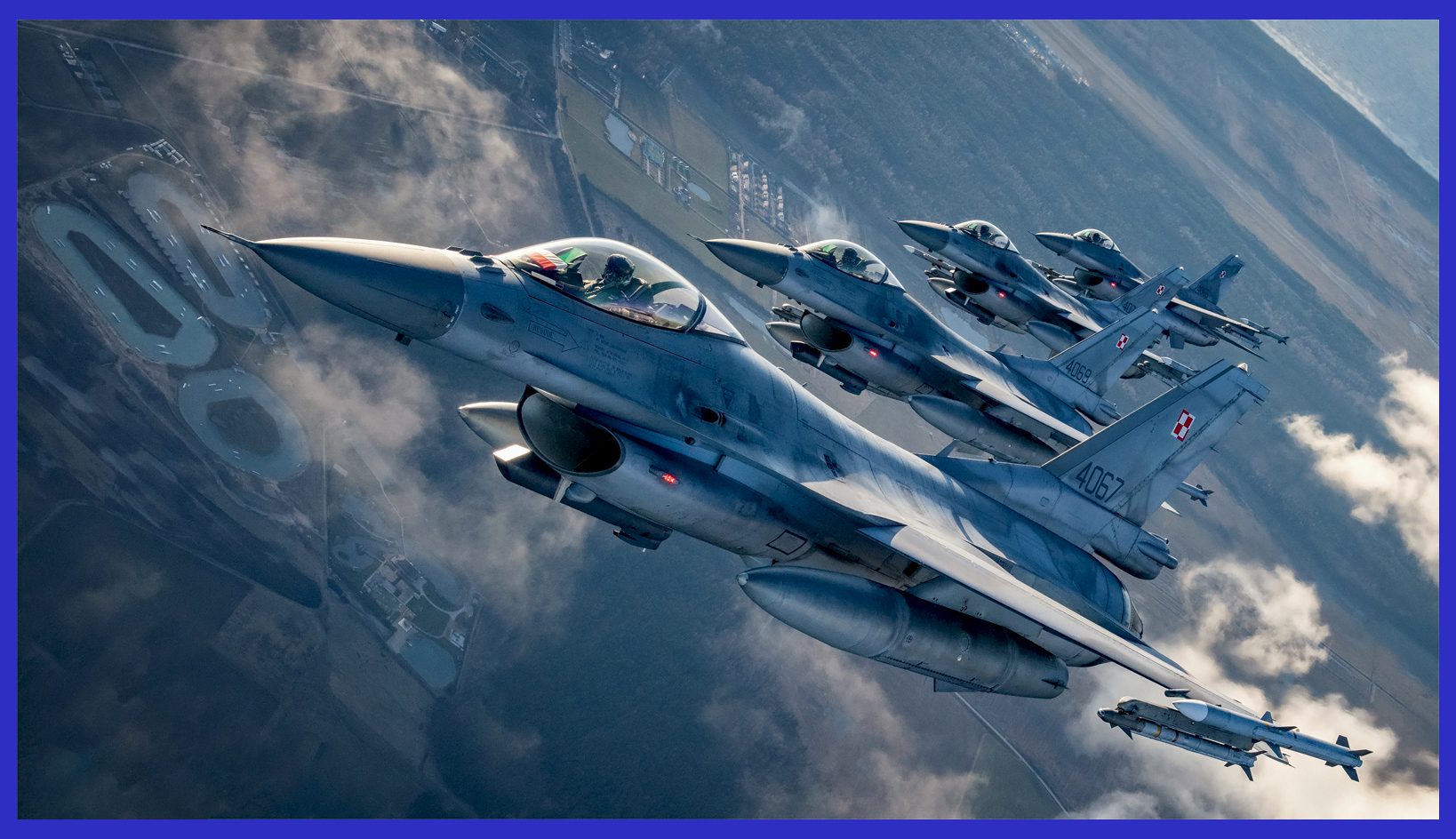
Operational History of the F-16 Fighting Falcon
The operational history of the F-16 Fighting Falcon is extensive, as this versatile multirole fighter has been deployed in numerous conflicts and missions worldwide since its introduction in the late 1970s. Here are some key highlights of the F-16’s operational history:
- 1980s – Israeli Air Force (IAF) Operations: The F-16 entered combat for the first time with the Israeli Air Force in the early 1980s, revealing its formidable capabilities in action. Throughout Operation Peace for Galilee in 1982, F-16s displayed fearlessness as they carried out air-to-air and air-to-ground missions with remarkable precision and effectiveness, showcasing their mettle during the intense Lebanon War. In one of the most significant air battles involving jet aircraft, the Israeli Air Force’s F-16s demonstrated unparalleled prowess, achieving an astonishing 44 air-to-air kills and firmly establishing themselves as dominant aerial defenders during the conflict.
- 1990s – Gulf War (Operation Desert Storm): In 1991, during the Gulf War, the F-16 fighter jet played a crucial and active role. U.S. and coalition forces conducted a substantial deployment of F-16s, utilizing them for a diverse set of missions. These included air superiority operations, ground attack missions, and sorties focused on suppressing enemy air defences (SEAD). Furthermore, the F-16s served as vital escorts for strategic stealth bombers, particularly during night missions. The aircraft’s adaptability and advanced capabilities were instrumental in ensuring the successful execution of a wide range of missions during the Gulf War.
- 1990s – Yugoslav Wars: During the conflicts in Bosnia and Kosovo, F-16s from various NATO countries were actively involved in enforcing no-fly zones and conducting airstrikes against Serbian forces.
- The 2000s – War on Terror (Afghanistan and Iraq): After the 9/11 terrorist attacks, the F-16 was extensively deployed in Afghanistan for close air support (CAS) missions and in Iraq during Operation Iraqi Freedom for both ground support and air-to-air combat. Most of the F-16s deployed in Afghanistan were used for ground operations because there were no air-to-air threats posed by the Taliban.
- 2011s – Syrian Civil War: Various nations operating F-16s, including the U.S., Turkey, and others, have used the aircraft in the ongoing Syrian civil war for precision strikes against ISIS and other extremist groups.
Since its inception and continuing into 2023 and beyond, the F-16 remains actively utilized by numerous air forces worldwide, serving in roles such as air defence, ground attack, reconnaissance, and training. Throughout its operational history, the F-16 has consistently demonstrated its adaptability, performance, and reliability across various mission profiles. Its capability to handle both air-to-air and air-to-ground missions, equipped with a wide range of weaponry, has made it a pivotal asset for air forces globally. With a remarkable combat record and ongoing upgrades, the F-16 stands as one of the most successful and enduring fighter aircraft to date.

The Latest Generation Lockheed Martin F-16V Block 70: Technical Specifications
- Country Of Origin: USA
- Crew: 1
- Length: 49.3 ft ( 15.027 m )
- Wingspan: 32.8 ft ( 10 m )
- Height: 16.7 ft ( 5.090 m )
- Wing area: 300 sq ft ( 27.87 m2 )
- Empty Weight: 9,208 kg ( 20,300 lb )
- Max Takeoff Weight: 21,772 kg ( 48,000 lb )
- Max Weapons Payload: 7,700 kg ( 16,976 lb )
- Powerplant: 1 × General Electric F110-GE-129 for Block 50 and 70 aircraft, 17,155 lbf (76.31 kN) thrust dry, 29,400 lbf (131 kN) with afterburner
- Max Speed: Mach 2.05 / 2,178 km/h ( 1,353 mph ) at 40,000 feet
- Combat range: 546 km ( 339 mi ) on a hi-lo-hi mission with 4 × 1,000 lb (454 kg) bombs + 4 AAMs
- Ferry range with external fuel: 4,217 km ( 2,620 mi )
- Service ceiling: 50,000 ft (15,000 m)
- g limits: +9
- Service life: 8,000 hrs
- Armament: 1 × 20 mm M61A1 Vulcan 6-barrel rotary cannon, 511 rounds, The F-16 has a total of 11 hard points, which include 2 wing-tip air-to-air missile launch rails, 6 under-wing stations, and 3 under-fuselage pylon stations (2 out of 3 are for sensors). These hard points have a combined capacity of up to 7,700 kg (16,976 lb) to carry a variety of stores. The F-16 can be equipped with combinations of Sidewinder, AMRAAM, IRIS-T, Python 4 & 5 air-to-air missiles, as well as Maverick, HARM, JASSM, and JSOW air-to-surface missiles. It also has the capability to carry Harpoon and Penguin anti-ship missiles, cluster bombs, GP bombs, Small Diameter Bombs (SDB), JDAM, Paveway laser-guided bombs (LGB), and B61/83 Nuclear bombs.

Furthermore, take advantage of this exclusive opportunity to acquire the exquisite large-scale 1/72 premium die-cast models of the formidable Lockheed Martin F-16C and Israeli F-16I (Sufa) Fighting Falcon. These remarkable and iconic military jets, widely acclaimed as the epitome of advanced interceptors with an impeccable track record, are now available for purchase on AirModels with worldwide delivery. Do not let this chance slip away to own these exceptional and meticulously crafted models that flawlessly encapsulate the essence of aviation history. Click here now to secure your piece before the limited stock is depleted.
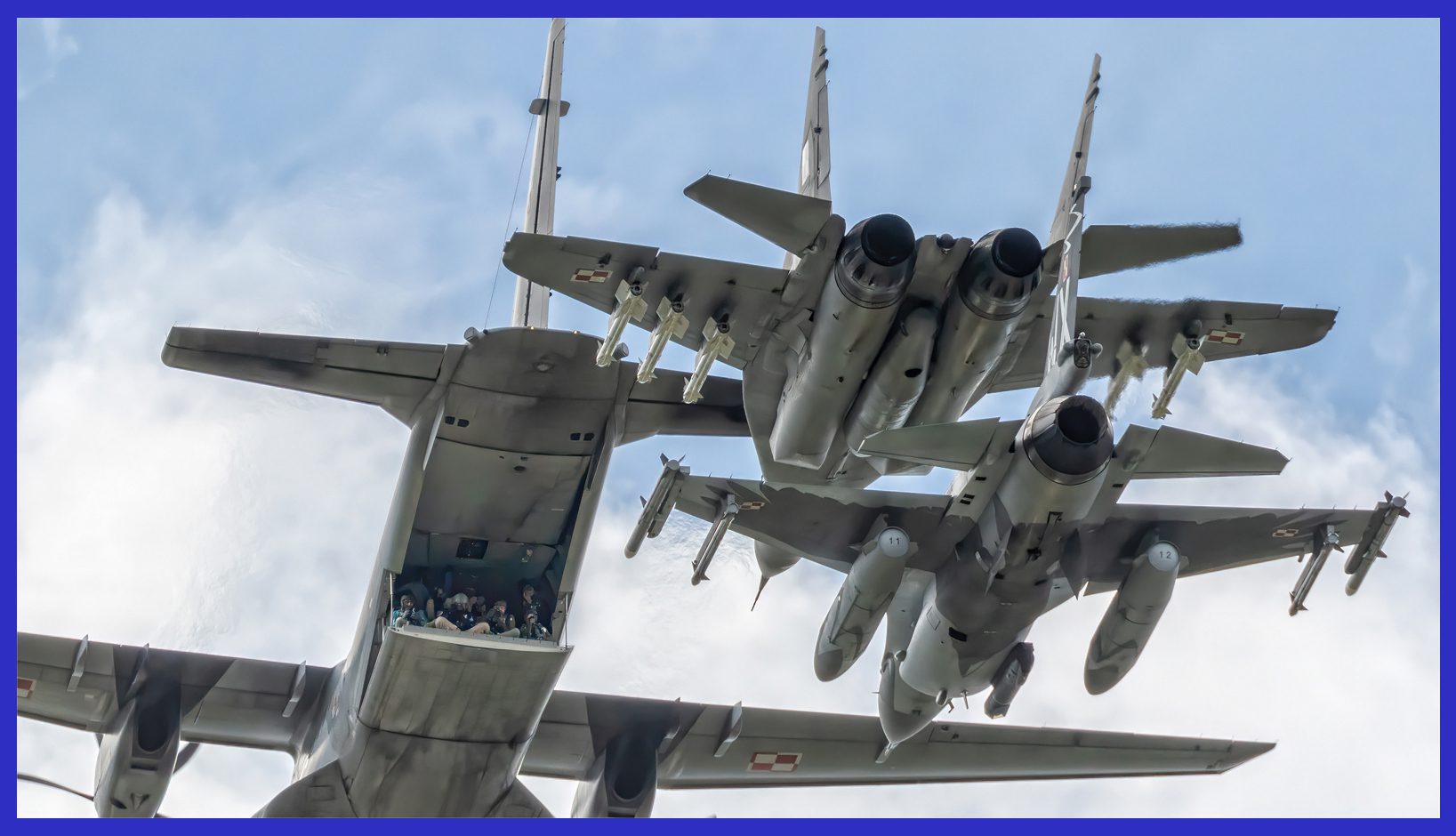
In conclusion, the impact of the F-16 extends far beyond air superiority. Its ability to excel in a diverse array of roles, from precision strikes on ground targets to reconnaissance and training, showcases its true versatility. Whether engaging enemy forces or providing vital support to troops on the ground, the F-16 has been a steadfast ally on the modern battlefield. As the technology of warfare continues to evolve, the F-16 has kept pace through continuous upgrades and advancements. With improved avionics, enhanced radar systems, and state-of-the-art weaponry, it remains at the forefront of aerial warfare.
But perhaps the most enduring legacy of the F-16 lies in the hearts and minds of the countless pilots who have had the privilege of flying this iconic aircraft. Its intuitive controls, superior visibility, and unmatched handling have endeared it to aviators worldwide, earning it the nickname “Viper” – a symbol of speed, agility, and lethal precision. Its enduring presence in the skies serves as a reminder of the dedication and craftsmanship of those who designed and built it. The F-16 will forever remain a symbol of excellence, a guardian of the skies, and a testament to the extraordinary heights that aviation can achieve.
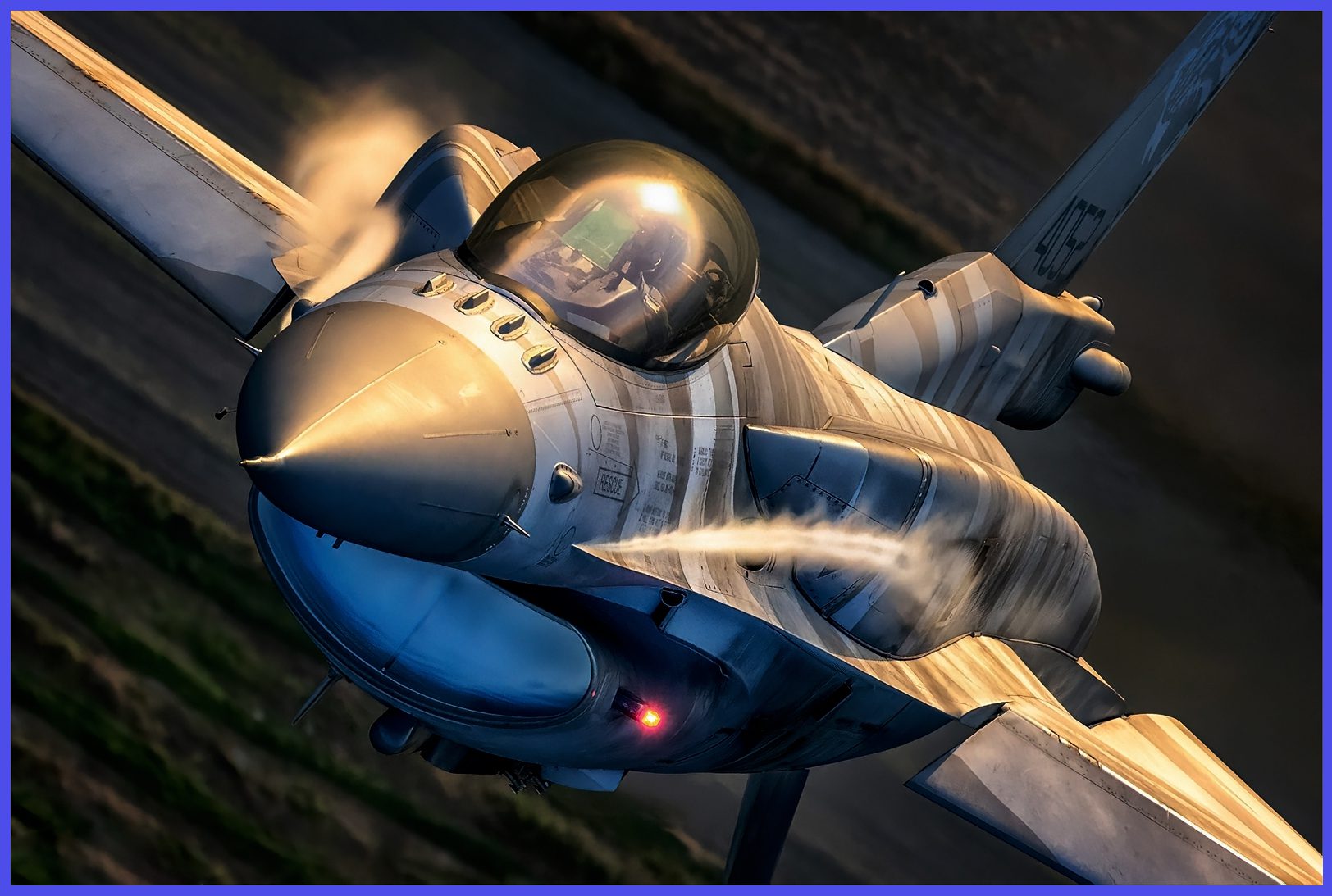
Important Announcement for Our Valued Readers!
After an article is published, updates or changes may have occurred beyond the time of publication. Therefore, it is important to be aware that certain information in the article might be outdated. To ensure the most accurate analysis, it is highly recommended to verify the content with the latest sources available.
However, we are dedicated to delivering outstanding articles on military products and global updates. Maintaining quality and smooth operation requires resources. Your support sustains our efforts in providing insightful content. By purchasing high-quality products through our affiliated links, you help us keep our platform alive and acquire top-notch items. Your unwavering support is invaluable and inspires us to strive further.
We welcome your suggestions and requests for more information, as we value feedback from our readers. If there’s specific defence material or equipment not covered on our site, please share your request in the comments. We’ll strive to research and provide the required information. We sincerely thank you for your unwavering interest in our website, and we eagerly anticipate hearing from you! Enjoy your reading experience!
